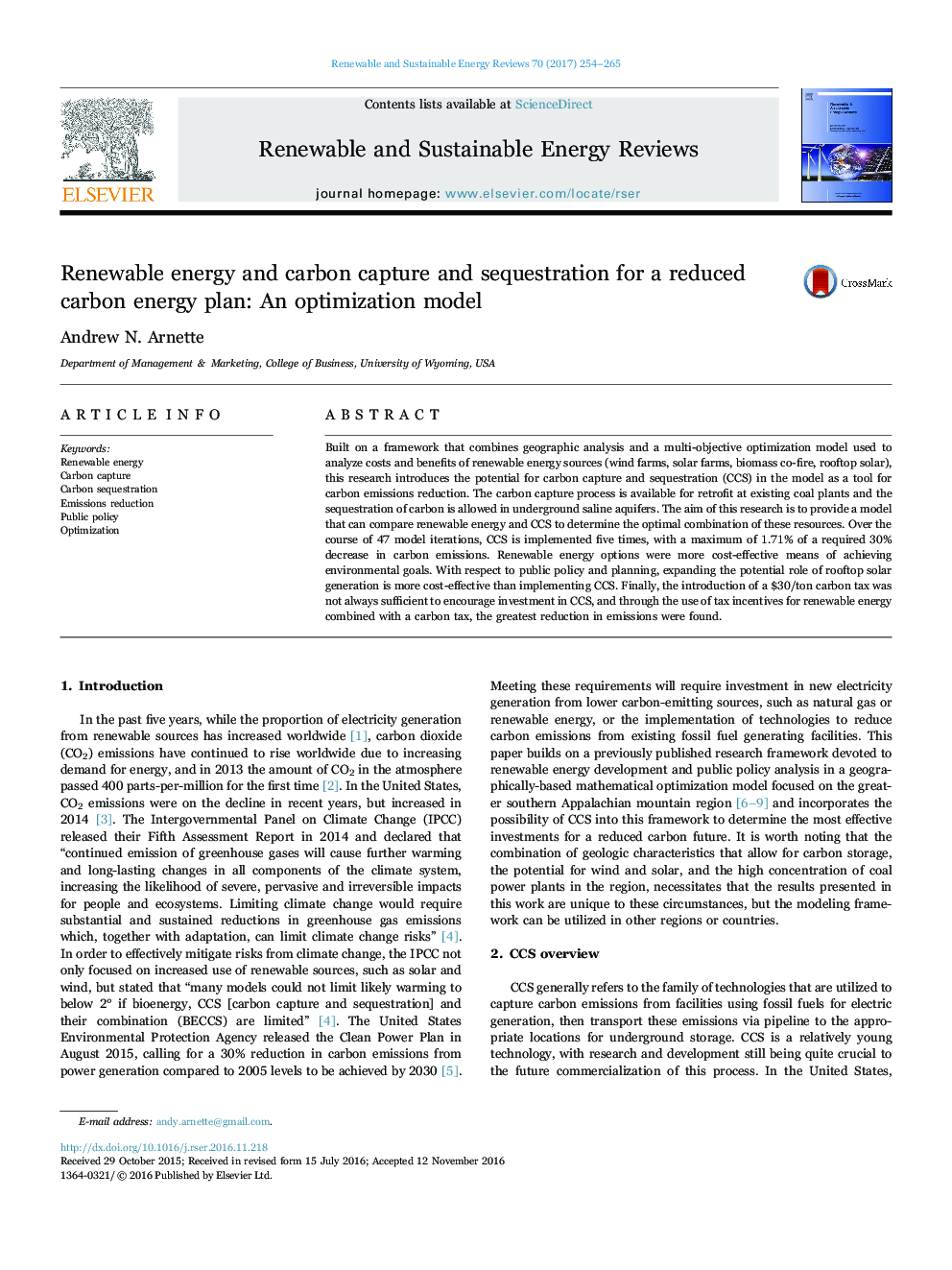| Article ID | Journal | Published Year | Pages | File Type |
|---|---|---|---|---|
| 5483227 | Renewable and Sustainable Energy Reviews | 2017 | 12 Pages |
Abstract
Built on a framework that combines geographic analysis and a multi-objective optimization model used to analyze costs and benefits of renewable energy sources (wind farms, solar farms, biomass co-fire, rooftop solar), this research introduces the potential for carbon capture and sequestration (CCS) in the model as a tool for carbon emissions reduction. The carbon capture process is available for retrofit at existing coal plants and the sequestration of carbon is allowed in underground saline aquifers. The aim of this research is to provide a model that can compare renewable energy and CCS to determine the optimal combination of these resources. Over the course of 47 model iterations, CCS is implemented five times, with a maximum of 1.71% of a required 30% decrease in carbon emissions. Renewable energy options were more cost-effective means of achieving environmental goals. With respect to public policy and planning, expanding the potential role of rooftop solar generation is more cost-effective than implementing CCS. Finally, the introduction of a $30/ton carbon tax was not always sufficient to encourage investment in CCS, and through the use of tax incentives for renewable energy combined with a carbon tax, the greatest reduction in emissions were found.
Keywords
Related Topics
Physical Sciences and Engineering
Energy
Renewable Energy, Sustainability and the Environment
Authors
Andrew N. Arnette,
